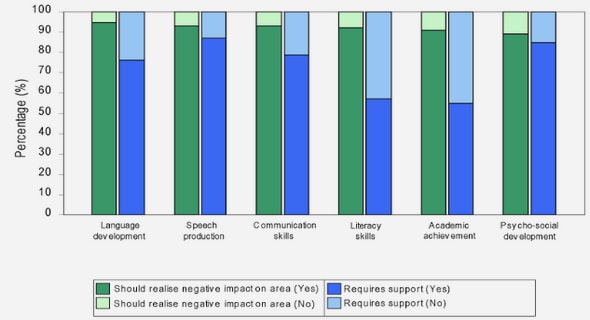(Downloads - 0)
For more info about our services contact : help@bestpfe.com
Table of contents
I. INTRODUCTION
SHIFTING BASELINES AND THE RISE OF “HISTORICAL ECOLOGY”
The shifting baseline syndrome
Implications for conservation
Applied historical ecology
MARINE HISTORICAL ECOLOGY AND THE OVEREXPLOITATION OF MARINE RESOURCES
Marine historical ecology
Consequences of the overexploitation of marine resources
OPPORTUNITIES FOR SETTING APPROPRIATE POPULATION BASELINES
Historical occurrence data
Methodological opportunities for setting baselines from historical data
FOCUS ON MARINE MAMMALS
A brief history of marine mammal exploitation
Marine mammals as an interesting case study
OBJECTIVES
STRUCTURE
II. USING SPECIES’ HISTORICAL OCCURRENCE DATA TO INVESTIGATE RANGE CONTRACTIONS: A REVIEW FOR TEN MARINE MAMMAL SPECIES AND POSSIBLE APPLICATIONS
ABSTRACT
INTRODUCTION
STRATEGY FOR REVIEWING HISTORICAL DATA
SPECIES REVIEWS
Walrus (Odobenus rosmarus)
Caribbean monk seal (Monachus tropicalis)
Mediterranean monk seal (Monachus monachus)
Bowhead whale (Balaena mysticetus)
North Atlantic right whale (Eubaleana glacialis)
North Pacific right whale (Eubalaena japonica)
Southern right whale (Eubalaena australis)
Gray whale (Eschrichtius robustus)
Humpback whale (Megaptera noveaengliae)
Sperm whale (Physeter macrocephalus)
CHALLENGES AND OPPORTUNITIES IN HISTORICAL OCCURRENCE DATA
Archaeological remains
Historical accounts
Industry statistics
APPLICATIONS OF SPECIES’ HISTORICAL OCCURRENCE DATA
Improving understanding of the ecology of depleted species
Mapping the historical envelope of species’ occurrence
Mapping the sequence of historical depletion of a species
Modeling a species’ historical distribution based on its environmental preferences
DISCUSSION AND CONCLUSION
III. COMBINING HISTORICAL DATA AND SPECIES DISTRIBUTION MODELS TO FILL INFORMATION GAPS FOR SPECIES WITH VARIOUS LEVELS OF DEPLETION
ABSTRACT
INTRODUCTION
Three species, three histories of exploitation
Challenges and Opportunities
MATERIAL AND METHODS
Nineteenth century whaling data
Environmental data
Species distribution models
RESULTS AND DISCUSSION
Limitations and caveats
Humpback whale (Megaptera novaeangliae)
Bowhead whale (Balaena mysticetus)
Gray whale (Eschrichtius robustus)
Interest of the modeling approach
CONCLUSION
APPENDIX
Appendix S1. Model selection, performance and validation
Appendix S2. Fitted functions of the species-environment relationships produced by the BRT
IV. HISTORICAL SUMMER DISTRIBUTION OF THE ENDANGERED NORTH ATLANTIC RIGHT WHALE (EUBALAENA GLACIALIS): A HYPOTHESIS BASED ON ENVIRONMENTAL PREFERENCES OF A CONGENERIC
ABSTRACT
INTRODUCTION
MATERIAL AND METHODS
Historical records of North Pacific right whales
Environmental data
Species distribution modeling
Historical records of North Atlantic right whales
RESULTS
Historical records of North Pacific right whales
Species distribution model
Model predictions
Historical records of North Atlantic right whales
DISCUSSION
Assumptions and caveats
Comparison between the model predictions and species records in the North Atlantic
CONCLUSIONS
APPENDICES
Appendix S3: Fitted functions
Appendix S6: Extended discussion
V. HOW MANY RIGHT WHALES WERE THERE IN THE NORTH ATLANTIC BEFORE COMMERCIAL WHALING? AN ESTIMATE BASED ON NORTH PACIFIC WHALING RECORDS
ABSTRACT
INTRODUCTION
METHODS AND RESULTS
Data on the distribution of catches of North Pacific right whales
Environmental predictors
Abundance modeling in the North Pacific
Model validation
Estimates of total population size in the North Pacific
Estimates of total population size in the North Atlantic
DISCUSSION
Uncertainties and assumptions
Agreement between predictions, the historical record and genetic analyses
Implications for the present and future of the North Atlantic right whale
CONCLUSION
APPENDICES
VI. DISCUSSION
RECONSTRUCTING THE PAST: FROM DESCRIPTION TO PREDICTION
Interpretation of historical anecdotes
Estimates of historical catches
Maps of historical occurrence
Envelopes of historical occurrence
Predictive models of historical distribution
Predictive models of historical abundance
LESSONS LEARNED FROM THE ANALYSIS OF HISTORICAL DATA
Understanding species’ habitat preferences and how they have been affected by humans
Understanding past distributions and anthropogenic range contractions
Understanding past abundances and human-caused population depletions
BIODIVERSITY CONSERVATION IN A CHANGING WORLD
How to define the historical baseline?
Is the historical baseline an achievable/desirable target for conservation?
REFERENCES


